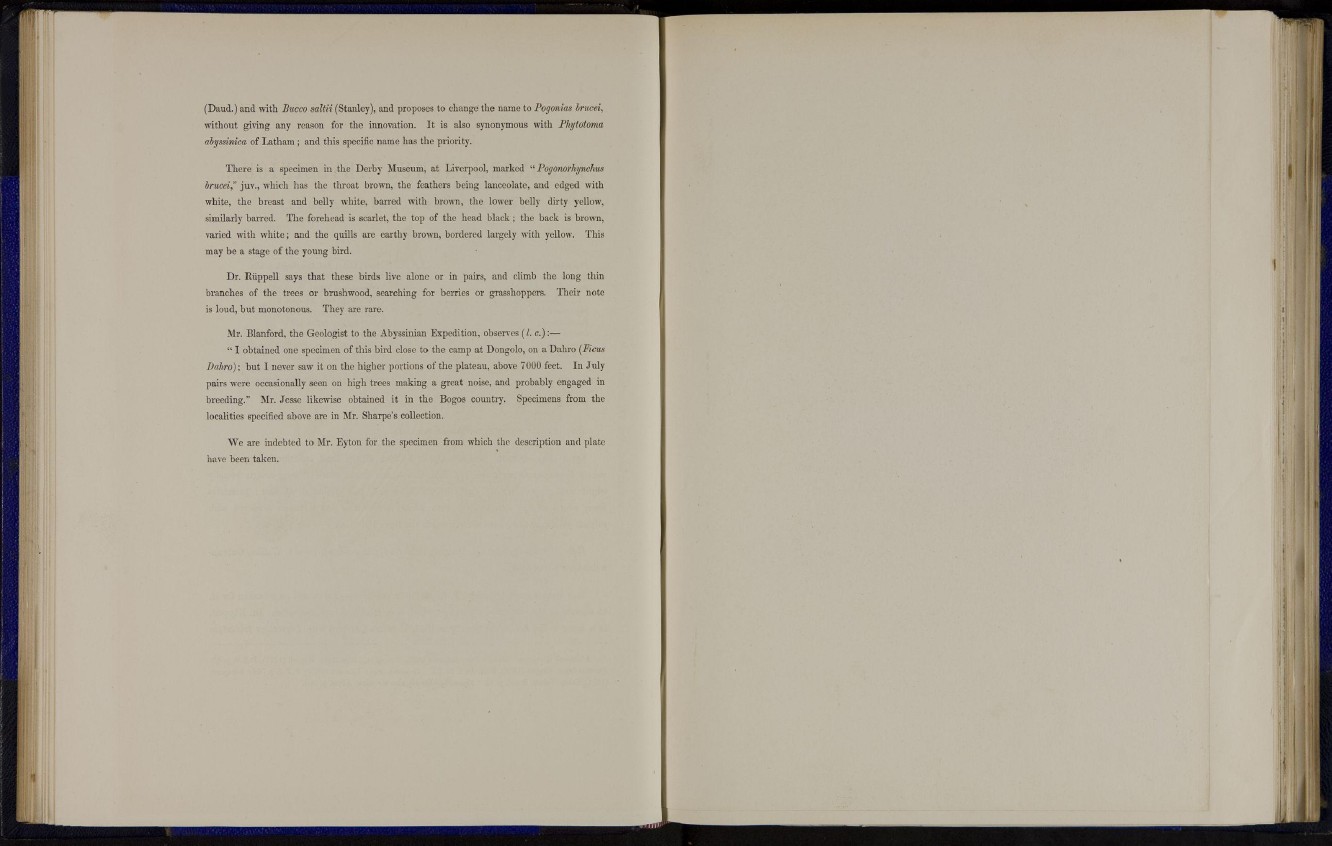
(Daud.) and with Bucco saltii (Stanley), and proposes to change the name to Pogonias brucei,
without giving any reason for the innovation. It is also synonymous with Phytotoma
abyssinica of Latham; and this specific name has the priority.
There is a specimen in the Derby Museum, at Liverpool, marked " Pogonorhynchus
brucei," juv., which has the throat brown, the feathers being lanceolate, and edged with
white, the breast and belly white, barred with brown, the lower belly dirty yellow,
similarly barred. The forehead is scarlet, the top of the head black; the back is brown,
varied with white; and the quills are earthy brown, bordered largely with yellow. This
may be a stage of the young bird.
Dr. Riippell says that these birds live alone or in pairs, and climb the long thin
branches of the trees or brushwood, searching for berries or grasshoppers. Their note
is loud, but monotonous. They are rare.
Mr. Blanford, the Geologist to the Abyssinian Expedition, observes (I. c.):—
" I obtained one specimen of this bird close to the camp at Dongolo, on a Dahro (Ficus
Dahro); but I never saw it on the higher portions of the plateau, above 7000 feet. In July
pairs were occasionally seen on high trees making a great noise, and probably engaged in
breeding." Mr. Jesse likewise obtained it in the Bogos country. Specimens from the
localities specified above are in Mr. Sharpe's collection.
We are indebted to Mr. Eyton for the specimen from which the description and plate
have been taken.